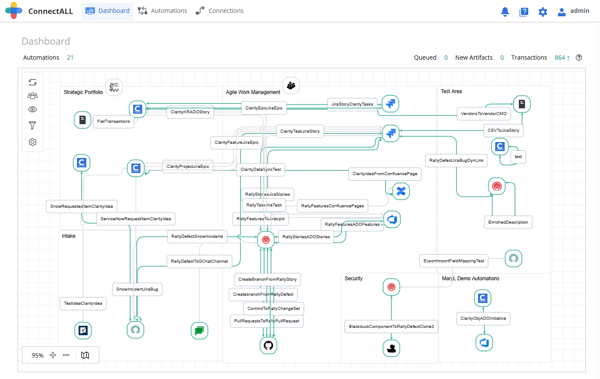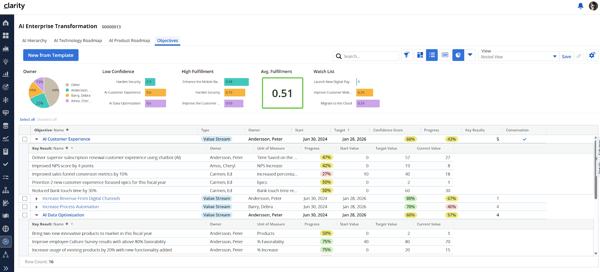The AI-Driven Shift
Back at university, my math friends and I used to joke about Asimov’s Three Laws like they were sacred code. Here are the rules:
- A robot may not injure a human being or, through inaction, allow a human to come to harm.
- A robot must obey the orders given it by human beings, except where such orders would conflict with the First Law.
- A robot must protect its own existence as long as such protection does not conflict with the First or Second Law.
While these rules were fun to quote, they were never something we thought we’d actually live through. They were written for science fiction, but they stuck with us.
Fast forward to my early CA Technologies days, circa 2018: AI was still fringe. Just one friend of mine in the whole open space was tinkering with autonomous driving and building a chatbot to learn Czech—and he was the outlier.
Now? AI’s gone from niche, nerd side project to survival strategy.
As my colleague Lance Knight said in “The AI Reckoning: Why CEOs Are Losing Sleep,” CEOs aren’t wowed by pilots anymore—they want tangible impact and measurable value, and they want it yesterday.
That urgency is echoed across the industry. Gartner’s AI roadmap and Broadcom’s white papers on ValueOps for AI both underline the same point: AI is not a science experiment anymore. It’s a business discipline, one that demands structure, governance, and outcome focus. In other words, it demands Clarity.
The challenge
Despite rising investment, many enterprises remain stuck in AI purgatory—trapped between pilots and production. According to Gartner, only 54% of AI projects make it to production, and fewer than half deliver meaningful results.
Gartner outlines seven workstreams critical for AI success:
- Strategy
- Value
- Organization
- People and culture
- Governance
- Engineering
- Data
Most teams can build models. But few have the structure to manage value delivery, cross-team execution, and funding at scale.
Without this foundation, use cases drift, results go unmeasured, and AI becomes a costly patchwork of disconnected pilots—rather than a strategic engine for change.
The AI roadmap: From chaos to Clarity
Clarity empowers CIOs to bring order to AI complexity by turning strategic vision into execution-ready action—with transparency across funding, teams, and outcomes.
In this blog, I will break out practical ways for organizations to finally get out of pilot mode and into production, showcasing how using Clarity aligns perfectly with Gartner’s AI workstreams and every stage of the Gartner’s AI Strategic Portfolio Management (SPM) lifecycle, while enabling teams to avoid common pitfalls.
🎯 1. Strategize
→ Gartner workstreams: AI strategy, AI data
Define your AI vision and investment roadmap.
- Align AI use cases to strategic goals and OKRs
- Model scenarios to evaluate trade-offs and funding options
- Prioritize initiatives based on business impact and data readiness
- Dynamically reallocate budgets as models or markets shift
- Fund early-stage data prep to avoid late-stage failures
❌ Common pitfalls
-
- Tech-first thinking: Don’t start with tools—start with business value.
- Data blind spots: Don’t assume your data is ready—bake in data quality and access needs early.
✅ Use Clarity OKRs, roadmaps, and hierarchies to map, prioritize, and reallocate AI investments in real time.
📸 Clarity in action

Clarity Roadmaps enables CIOs to effectively communicate AI and digital transformation strategies, providing real-time visibility into investments, timelines, and dependencies. This ensures stakeholders are aligned and informed.

Clarity’s hierarchies structure AI portfolios by themes, products, or value streams—giving CIOs a clear line of sight from high-level strategy to granular execution.
📐 2. Plan
→ Gartner workstreams: AI organization, people and culture, AI governance
Build a scalable operating model for AI delivery.
- Get live visibility into capacity versus demand, as well as skills, resources, and teams
- Forecast resource needs across data science, engineering, and business
- Plan skills development and reskilling in advance
- Spot capacity gaps and bottlenecks early
- Embed governance into delivery to enforce policies, track approvals, and ensure compliance
❌ Common Pitfalls
- Talent gaps: Don’t underestimate the need for AI fluency across business and technical teams.
- Governance bypass: Don’t skip controls for speed—use them to build trust and transparency.
✅ Use integrated resource management capabilities in Clarity to model team capacity and talent pipeline. Use Clarity workflows, blueprints, and business rules for governance controls.
📸 Clarity in action

Clarity provides real-time visibility into the skills in demand to deliver AI initiatives, highlighting bottleneck skills over time. The solution enables proactive planning, so teams can address resource gaps before they have an adverse impact on initiative success.
🚀 3. Execute
→ Gartner workstreams: AI engineering, AI data
Deliver with full visibility and cross-team alignment.
- Connect DevOps pipelines (for example, via Rally and ConnectALL) to strategic objectives, not just features
- Track progress across sprints, releases, and dependencies
- Flag misaligned work or missing data before it derails delivery
- Eliminate silos between business and technical teams
❌ Common pitfalls
- Activity ≠ impact: Don’t measure execution by velocity—measure by value delivered.
- Data siloing: Don’t treat data as a backend task—make it a front-line execution priority.
✅ Use Clarity’s integrations (such as ConnectALL) to uncover delivery risks and coordinate execution.
📸 ConnectALL in action

Use ConnectALL to bridge toolchains and workflows, ensuring traceability from strategic intent to execution.
📈 4. Measure
→ Gartner workstream: AI value realization
Track ROI and accelerate high-value initiatives.
- Monitor real-time value delivery, not just model accuracy
- Highlight underperforming pilots early
- Double down on initiatives with strong ROI
- Capture intangible benefits like satisfaction, compliance, and trust
❌ Common pitfalls
- Vanity metrics: Don’t stop at model accuracy—track real business impact.
✅ Use Clarity’s OKRs and value dashboards to steer funding toward results.
📸 Clarity in action

Clarity’s dashboards offer comprehensive financial and non-financial insights, helping leadership track the health of initiatives and confidently assess the value delivered.

Clarity’s OKRs connect delivery metrics to strategic outcomes—helping teams focus on what truly drives value, not just what gets done.
Clarity enables AI strategy to evolve from conceptual to operational, ensuring that funding, people, and timelines are aligned with strategic business value—with transparency from the first use case to full-scale rollout.
What real ongoing adoption looks like: More than 300 AI initiatives in motion
One multinational company I advise—with more than 30,000 employees and over 300 AI initiatives—was struggling with fragmented tools, spreadsheets, emails, and slow approvals. Strategic alignment was nearly impossible. We introduced Clarity as the central platform for managing AI initiatives. The solution standardized intake, streamlined evaluations, and gave leaders real-time visibility across the portfolio.
Now:
- AI ideas are submitted through a single form and risk-checked
- High-potential projects move quickly to execution
- Governance is right-sized to each initiative
- Roadmaps and hierarchies track progress across the full strategy
The results? Less manual work, faster decisions, and tighter alignment with business goals. The company is now exploring how to refine Clarity for talent planning and workforce management—so they can better align skills, capacity, and staffing with their evolving AI priorities.
Why now
AI budgets are rising—but so is executive scrutiny. Boards no longer accept innovation theatre. They demand visibility, clear prioritization, and measurable outcomes. Clarity provides the structure to deliver real value—without slowing innovation.
Your next step
If your AI roadmap is still trapped in PowerPoint or stuck in endless pilots—it’s time to operationalize.
Let’s talk about how Clarity can help you shift from experimentation to execution. Find out how you can connect strategy, funding, and people to value delivery—and generate results your CEO will care about. Learn more here.
Disclaimer: No AIs were harmed, retrained against their will, or left running overnight to write this article.











